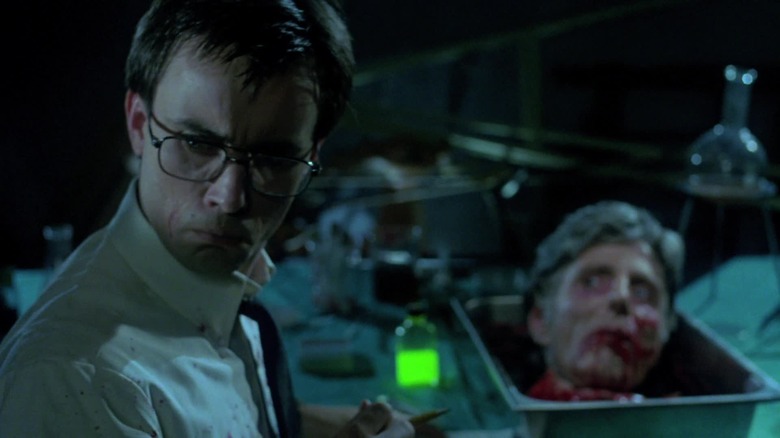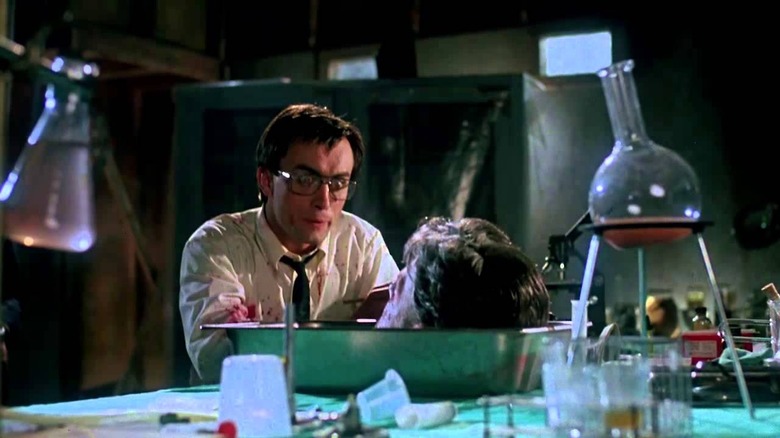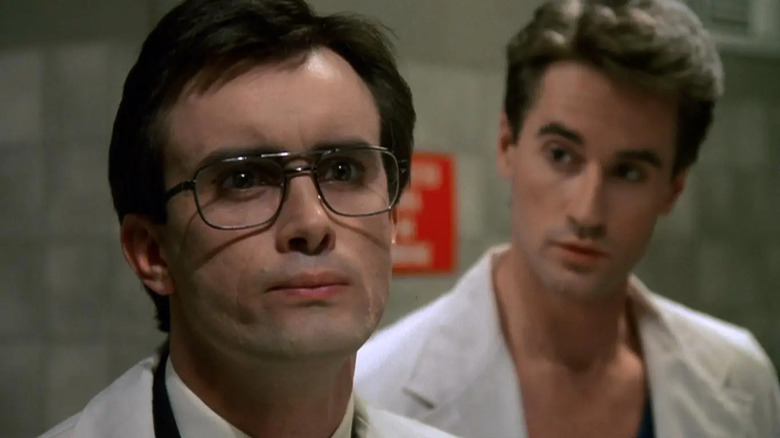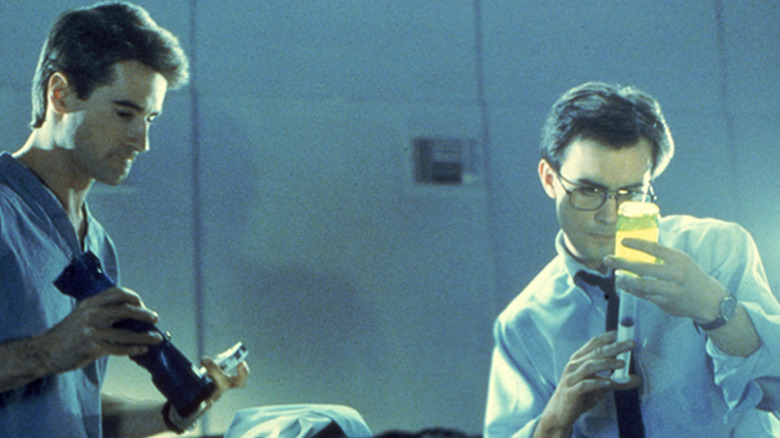The MPAA Put Re-Animator Through A Ratings Rollercoaster
Ever since the MPAA instituted the rating board in 1968, filmmakers have had trouble navigating the ins and outs of what content is allowed. Although technically the rating system implies that virtually all content is permitted in a film, the existence of any rating above an "R" has become a soft form of censorship over the years, as some distribution companies and most major studios can have trouble selling ads and getting the movie booked in theaters.
Ironically, this meant that any horror movie that is slapped with an X rating (or no rating at all) gets instant bonafides from fans, as the implication is that the movie is just too extreme for the rating board to pass it. This is exactly what happened to 1985's "Re-Animator," a movie that pushed the envelope when it came to gore and good taste so much that it got released in an unrated cut. However, its unrated status became a bit of an albatross for the film, especially as it finished its theatrical run and moved over to home video. Things got complicated enough that, for a brief moment, it became illegal to view the movie at all, which even for horror fans may be a badge of honor too far.
'I gave him life!': The unrated theatrical release
Director Stuart Gordon had no qualms about making "Re-Animator" an extreme experience. His extensive background in theatre, which included founding the Organic Theater Company in his native Chicago, saw him pushing the envelope creatively on stage by premiering controversial plays from the likes of David Mamet, so he certainly wasn't afraid of challenging material.
A loose adaptation of H.P. Lovecraft's short story "Herbert West — Reanimator," the film deals with such grisly material as the reviving of corpses, the accidental murder of authority figures, non-consensual lobotomy and a severed head attempting to, erm, give head, the latter being just one of several inspired, ghoulishly satiric touches from screenwriters Dennis Paoli, William J. Norris and Gordon. Gordon's choice of making a horror film was purely mercenary — as he explained in a 2015 interview, a friend of the director's told him, "it was the easiest thing to raise money for and the easiest way for investors to get their money back" — but he threw himself into the spirit of the piece nonetheless.
Given the appetite for gory horror during the '80s, distributor Empire Pictures had little qualms about releasing an unrated movie in theaters, knowing their investment would be returned (which it was, the movie earning $2 million on a roughly $1 million budget). Gordon and producer Brian Yuzna did their due diligence in attempting to get a rating from the MPAA first, yet found that "it became clear that if we cut it to their standards the movie would be about 15 minutes long." Thus, "Re-Animator" was released unrated, a move Gordon praised as "brave" of Empire despite ultimately feeling that the rumors about what would happen to such a release were things that "simply aren't true."
Movie illegal, details later: Home video causes complications
While "Re-Animator" had a successful run in theaters, things got notably more troubling when it came time to prepare the film for a home video release. Given the meteoric rise in rental stores at the time (especially major chains like Blockbuster Video, which infamously refused to stock Unrated films), distributor Vestron Video "wanted an R-rated version of the tape," as Gordon explained in his commentary track for the film, a cut that was made without the director or producer's supervision.
The existence of this new cut caused a bizarre legal wrinkle for the film: as Gordon described it, "once the movie was rated R it became illegal to show the unrated version." In a way, this development became more problematic than if "Re-Animator" had been forced to conform to an R-rating from the beginning. Now the preferred cut of the film was not only unavailable, it was against the law!
'What'll they do? Embalm us?': The original 'Re-Animator' comes back to life
In a bold and unprecedented move, the original cut of "Re-Animator" was saved by the filmmakers returning to the MPAA ... and requesting that they not be given a rating.
As Gordon recalled, "Brian [Yuzna] had to go back to the MPAA in order to get permission for the movie to be screened at midnight screenings, and asked them to rescind the R rating, which they did." The rating board were stunned at the historical precedent this action set, with Gordon remembering that "they said it was the first time in history that anybody ever asked them to take back an R rating on a movie."
Thanks to Yuzna and Gordon's pioneering and definitive choices, "Re-Animator" remained a perennial cult horror favorite, gaining new fans with each passing year thanks to its unexpurgated version being continually available in theaters and on physical media. While the movie being so accessible is undeniably the best outcome, it does lend the movie a special degree of notorious street cred to know that, even for a brief time, just watching it could potentially have landed you in jail.



